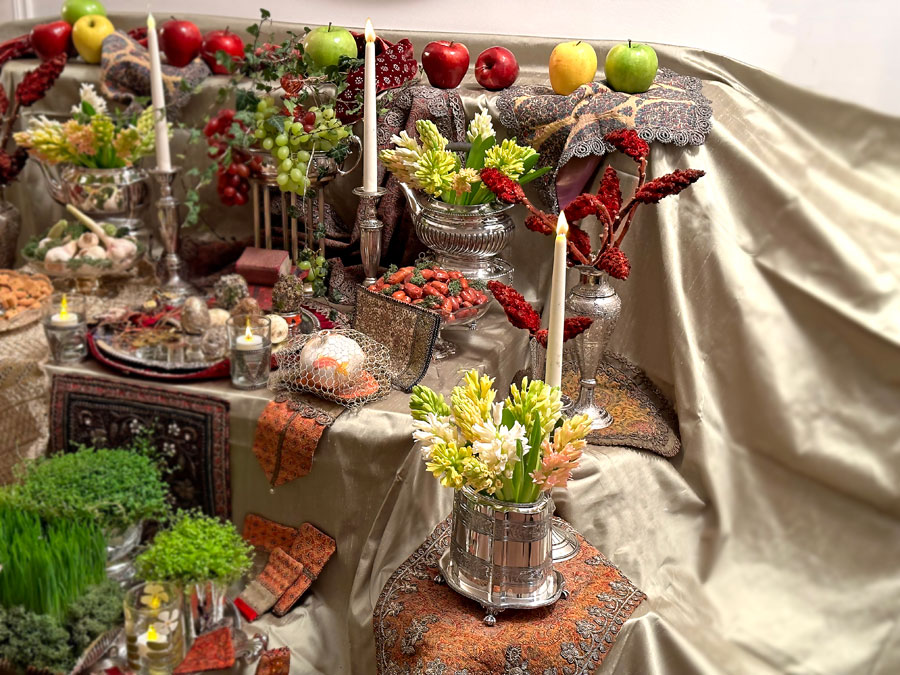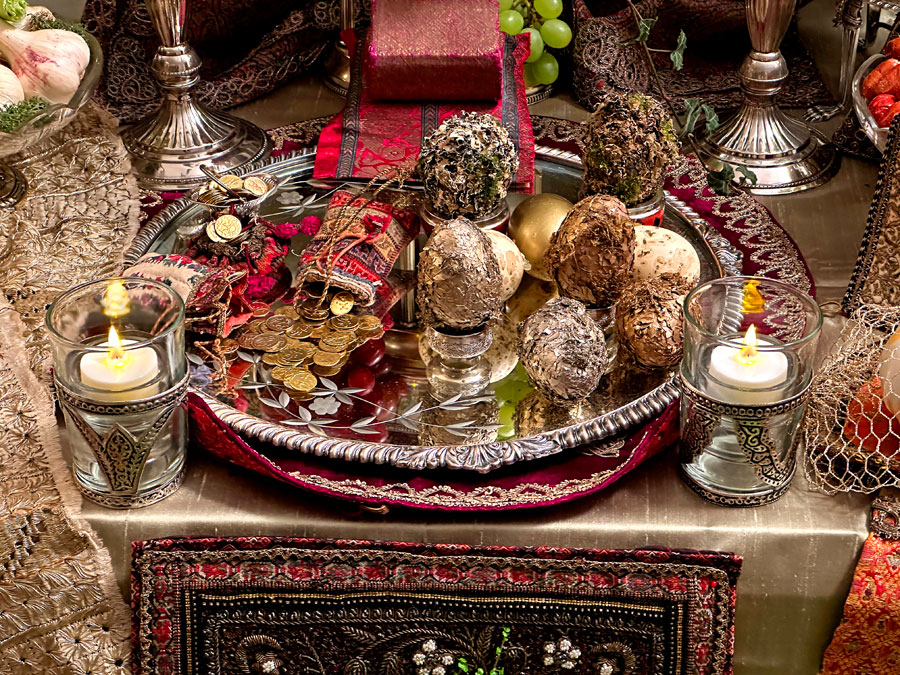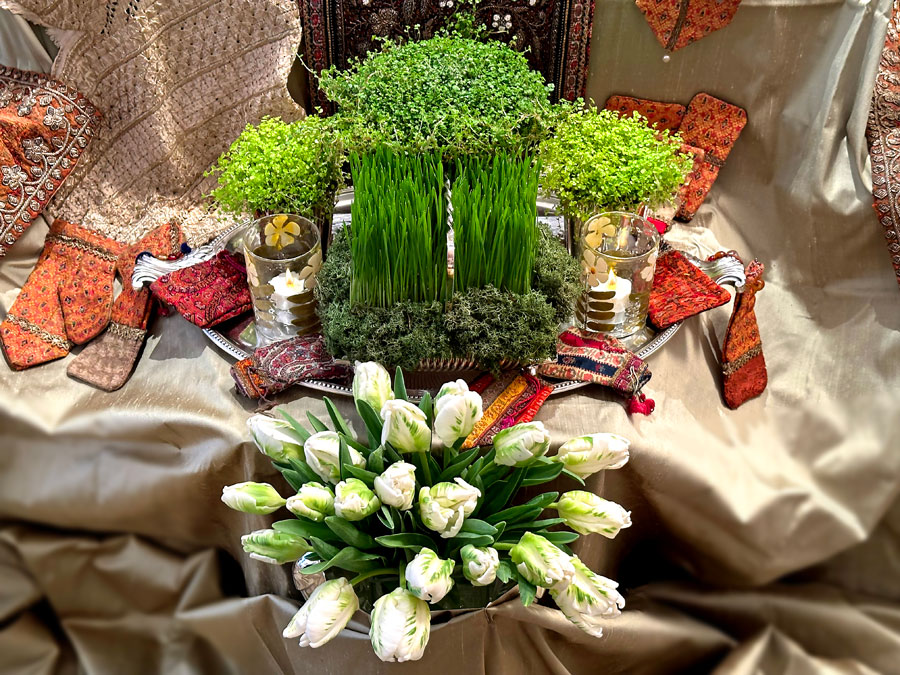Maximalist Haft sinn
This intricate, elaborate and maximalist sofreh-ye Nowruz (haft sinn) was created on several levels for the celebrations of Nowruz, for a private exhibition. It is set up on a length of rich, voluminous silver-green raw silk. The significance of the symbolic elements on display has been discussed at length on the News & Events and the Gallery pages, under the posts about Nowruz and sofreh-ye haft sinn.
This is the overall view of the arrangement, which includes many of the symbolic elements of the sofreh-ye haft sinn and is embellished with multiple lengths and fragments of predominantly antique Persian textiles and embroideries. Sabzeh (germinated wheat), sib (apples), serkeh (vinegar), sir (garlic), senjed (jujube fruits, or Russian olives), somaq (sumac), sekkeh (coins), sonbol (hyacinths), as well as another spring flower, tulips, are included. Also on display are a mirror, candles and tea lights, decorated eggs, a suggestion of goldfish, Persian pastries and a miniature volume of the Qur’an.
Click on the images below to enlarge
This is the left side of the sofreh-ye haft sinn. The focus of this image is various types and colours of apples spread out on the top level, next to and surrounded by lengths of antique Persian textiles. Pastel shades of hyacinths (sonbol) are presented in an antique silver-plated urn and a biscuit barrel. Branches of sumac (somaq) are displayed in antique Persian silver vases. Bulbs of fresh garlic (sir) and traditional Persian pastries are presented in antique crystal and silver-plated containers on a length of antique Indian textile, with metallic threads. Flames of candles softly illuminate this section.
This is the right side of the sofreh. The focus of this image, too, is various types and colours of apples spread out on the top level, next to and surrounded by lengths of antique Persian textiles. Again, pastel shades of hyacinths are presented in an antique silver-plated urn and a biscuit barrel, and branches of sumac are displayed in antique Persian silver vases. Senjeds are presented in an elegant container. Loosely wrapped in a length of gold open mesh, a single ceramic pomegranate boasts images of goldfish, which are traditionally part of the sofreh-ye haft sinn. Lengths and fragments of antique Persian textiles embellish this section, which is softly illuminated by flames.
This is the heart of the sofreh-ye haft sinn. On the upper level, the largest apple, which is shiny green, is displayed next to a length of draped antique Persian velvet with metallic accents, known as naqdeh duzi. An antique jar of vinegar (serkeh) surrounded by gracefully hanging green and red grapes are all placed in an antique crystal and silver-plated container. The arrangement is elegantly decorated with branches of trailing ivy. A miniature volume of an antique hand-written Qur’an flanked by a pair of antique silver-plated candleholders, is on display.
This is the central part of the sofreh-ye haft sinn. An antique silver-plated mirror is placed on a round piece of antique Persian velvet with a metallic border. A selection of intricately decorated eggs, an antique silver miniature basket holding gilded coins, and colourful pouches made of antique Persian textiles are displayed on the mirror. Gilded coins (sekkeh) also pour out of the pouches and over the mirror. A pair of tea lights, placed in glass and silver-plated holders, illuminates this intricately embellished central section.
This is the front section of the sofreh. The focus of the image is the antique silver-plated tray containing an antique silver-plated basket of germinated wheat (sabzeh), the essence of this spring festival (Nowruz). Sabzeh is a symbol of the renewal of nature and rebirth, and to emphasize that, pots of Soleirolia soleirolii are also placed next to it. Fragments and pouches made of antique Persian textiles embellish the tray and a pair of tea lights, illuminates this section. An impressive bouquet of Parrot tulips, wrapped in the same rich raw silk, as the one used as the base of the arrangement, sits below the composition of sabzeh and its surroundings. These elegant seasonal flowers herald the arrival of spring.






